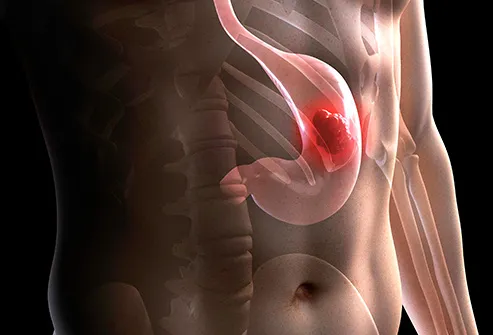Age. Most people are diagnosed with carcinoid tumors in their 40s or 50s.
Conditions.
Symptoms:
When carcinoid tumors form on cells that make hormones, the tumors can start to make hormone-like substances of their own. This can cause a variety of symptoms, depending on where this is going on.
For instance, if you’ve got the tumors in your GI tract, you might notice things like this happening to you:

- Pain in your belly
- Diarrhea
- Constipation
- Feel nauseated or throw up
- Can’t breathe right
- Get blood in your stool
- Lose weight
- Feel short of breath or wheeze
- Heartbeat starts to speed up
- Feel weak
- Hair starts to grow on your body and face
If you have a lung carcinoid tumor, you might get symptoms like a cough, and you sometimes might cough up some bloody mucus. You also might hear a whistling sound while you breathe, called wheezing.
When you have this type of cancer for many years, you might get a condition called carcinoid syndrome. It’s a group of symptoms that start when the tumors release certain hormones into your bloodstream.
Diagnosis:
These are diagnosis & initial investigation options for carcinoid tumors;
Biospy
Blood Urine Test
Upper endoscopy
Colonoscopy.
Capsule endoscopy.
CT, or computed tomography.
MRI, or magnetic resonance imaging
Radionuclide scanning.
Treatments options are below:
- Surgery
- Chemoembolization
- Hormone therapy
- Immunotherapy
- Radioembolization
- Targeted therapy

Post a comment